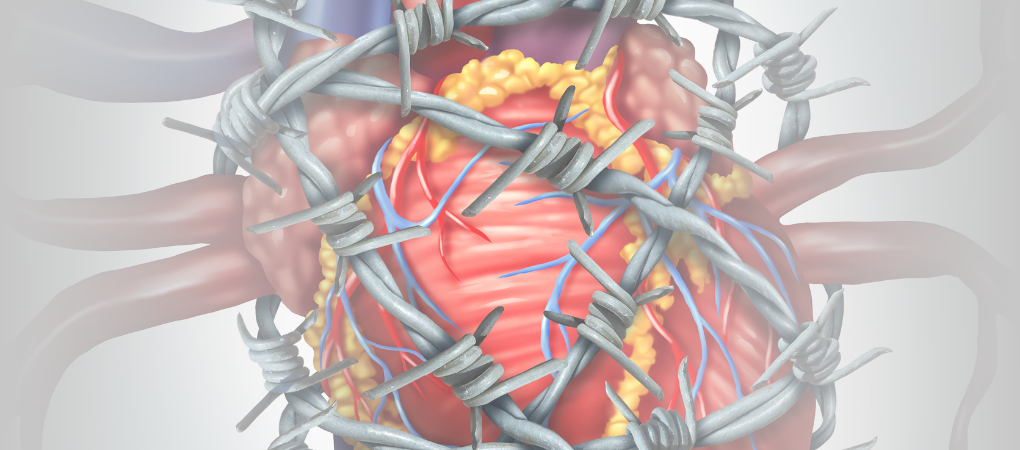Francesca Galiano
|
12/09/2022 - Last update 29/12/2022
Fellipe Amatuzzi, Alexandra Correa Gervazoni Balbuena de Lima, Marianne Lucena Da Silva, Graziella França Bernardelli Cipriano, Aparecida Maria Catai, Lawrence Patrick Cahalin, Gaspar Chiappa Gerson Cipriano Jr | Year 2021
Acute and Time-Course Effects of Osteopathic Manipulative Treatment on Vascular and Autonomic Function in Patients With Heart Failure
Pathology:
Heart failure
Type of study:
Randomized controlled trial
Date of publication of the study’:
2021/Jul/01

Purpose of the study
- Objective: to evaluate the effects of OMT in patients with heart failure
- Measured outcomes:
- Primary: change in the flow-mediated dilation of the brachial artery and in the low frequency (LF) of the heart rate variability (HRV)
- Secondary: change of various hemodynamic parameters (peak systolic velocity, mean velocity, time-averaged mean velocity, brachial diameter and resistance index) and in high frequency (HF) of the HRV
Participants
- Number: 20 people (7 female and 13 male)
- Criteria of inclusion: a diagnosis of heart failure with a reduction of the ejection fraction of the left ventricle < 45% and personalized pharmacologic treatment
- Criteria of exclusion: contraindications to OMT (hemodynamic decompensation) and the HRV measurements (cardiac pacemaker)
- Groups of study: 2 groups obtained by randomization
- Group 1: OMT, 10 people (4 female and 6 male, mean age 56.8 years)
- Group 2: sham treatment, 10 people (3 female and 7 male, mean age 59.6 years)
Interventions and evaluations
- Collection of demographic, anthropometric and clinical data
- cardiopulmonary function through cycloergometer with an incremental ramp test and blood flow rate through doppler echocardiography
- At the beginning of the study, immediately after the intervention and after 15 minutes, evaluation of the flow-mediated dilation and other hemodynamic parameters through ultrasounds at the level of the brachial artery and of the HRV via a heart rate sensor
- the hemodynamic parameters were: peak systolic velocity, peak diastolic velocity, mean velocity, time-averaged mean velocity, brachial diameter and resistance index
- the following frequency domain indices of the HRV were measured: LF, HF e LF/HF
- 1 30-minute session of OMT or sham treatment
- OMT: assessment through TART, high-velocity low-amplitude (base of the skull and cervical spine), soft tissue (base of the skull and retromaxillary region), visceral (heart and lungs) and lymphatic pump (thoracic duct) techniques
- Sham treatment: hands positioned as for OMT but without the execution of the technique, use of a chiropractic activator
- OMT performed by an osteopath with a 10-year experience
Results
- Primary outcomes: immediately after the intervention the flow-mediated dilation resulted statistically significantly increased, in the OMT group compared to the sham treatment group, in terms of both peak diameter and difference between peak diameter and diameter at rest.
With regard to the LF index, a statistically significant increase was noted in the OMT group after 15 minutes. - Secondary outcomes: immediately after the intervention, the resistance index decreased in the OMT group statistically significantly. The brachial diameter increased in the OMT group in a statistically significant manner after 15 minutes while the blood velocity values (diastolic, mean and time-averaged mean velocity) resulted lower in the OMT group.
With regard to the HF index, a statistically significant increase was noted in the OMT group after 15 minutes. - Further analyses: after 15 minutes, the value of brachial diameter and LF resulted strongly and positively correlated in a statistically significant manner.
No adverse effects have been reported.
Discussion
OMT showed to be able to act on blood flow before particular variations are detected in the autonomic modulation, which manifested at a later time. On the contrary, the sham treatment seems to have favored a tendency to vasoconstriction.
The results obtained with OMT are in line with past studies in regard to its effects on autonomic modulation and hemodynamic parameters. However, it is not clear how OMT can have similar effects on blood circulation (there are several hypotheses regarding the production of nitric oxide or the reduction of the concentration of inflammatory cytokines).
As for the effect on HRV, most likely mainly due to low-amplitude high-velocity techniques applied to the skull, it is interesting how this effect also occurred in a group of people following a beta-blockers therapy.
Further studies are needed to understand both the mechanisms underlying the effects of the osteopathic techniques and the links between hemodynamic parameters and autonomic modulation following similar interventions.
The review of Osteopedia
By Marco Chiera
Strengths: the autonomic modulation occurred also in case of pharmacologic treatment; OMT had effects that simple touch did not show; good discussion on the effects of OMT and of their possible rationale.
Limits: too small a sample to generalize the results; the calculation of the sample size (how many people to recruit) post-hoc (at the end of the study) is a circular practice and therefore discouraged (if the study obtains some results, the sample is considered sufficient; if the study does not obtain any results, the sample is considered insufficient).
Relying only on the HRV frequency domain indices is limiting, both because there is no precise correspondence between HF and vagal activity or between LF and orthosympathetic activity, and because there are many other indices (eg, entropy indices) able to better capture the complexity of autonomic modulation.

Are you an osteopath?
Register and enjoy the membership benefits. Create your public profile and publish your studies. It's free!
Register now
School or training institution?
Register and enjoy the membership benefits. Create your public profile and publish your studies. It's free!
Register now
Do you want to become an osteopath? Are you a student?
Register and enjoy the membership benefits. Create your public profile and publish your studies. It's free!
Register now







